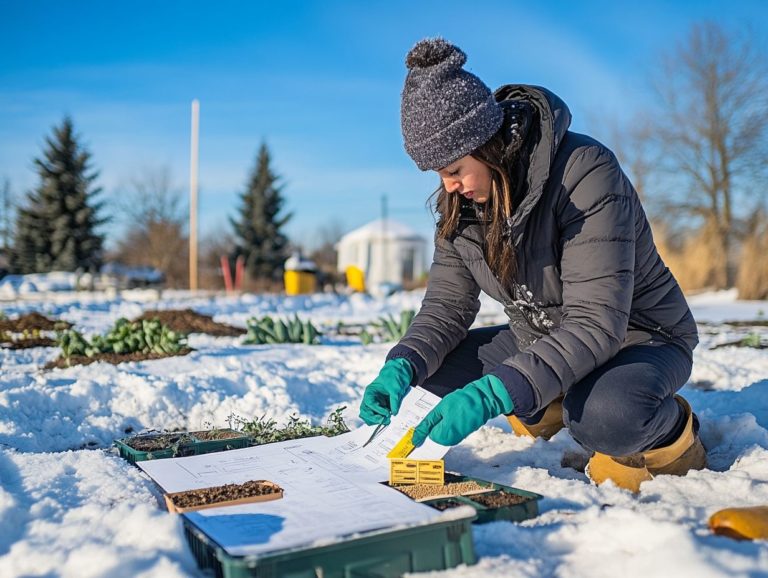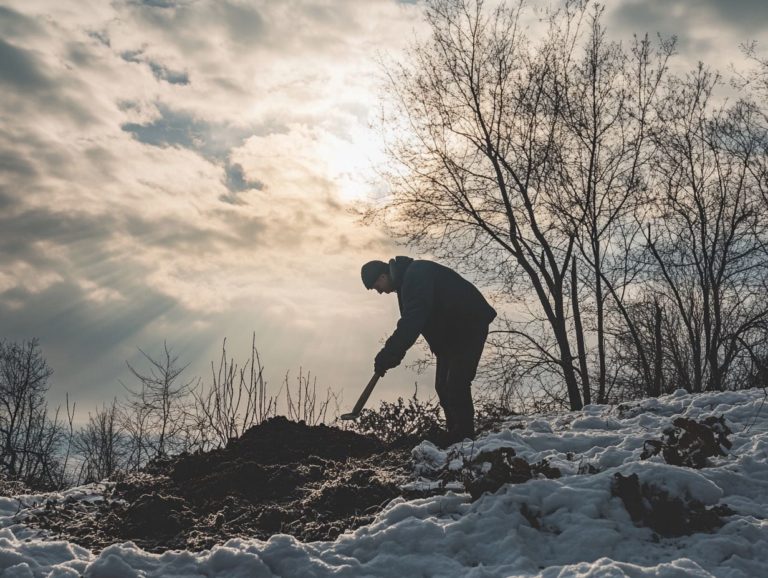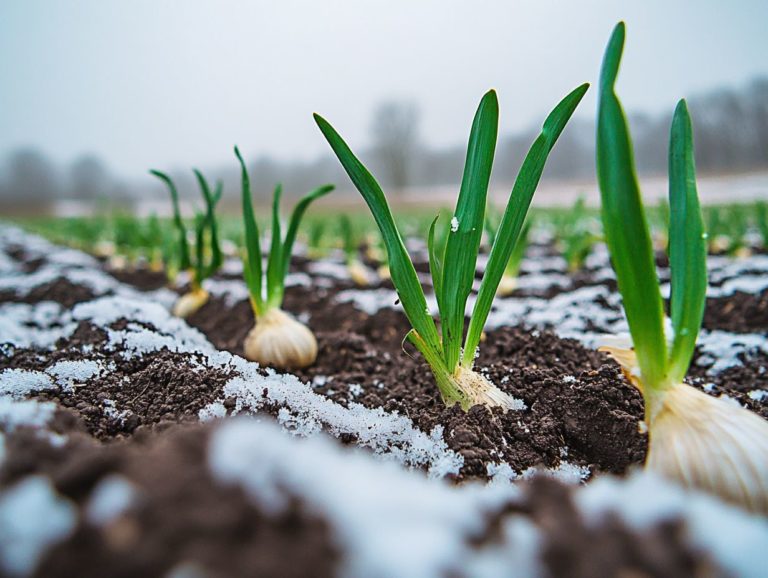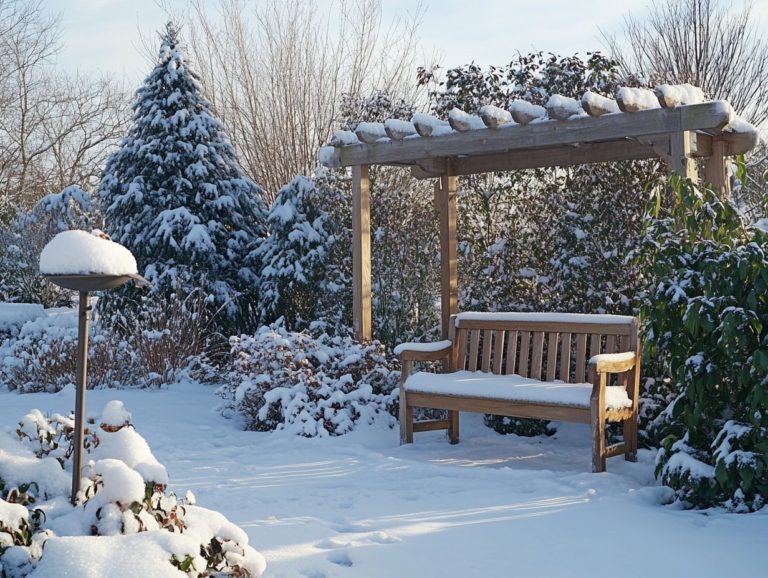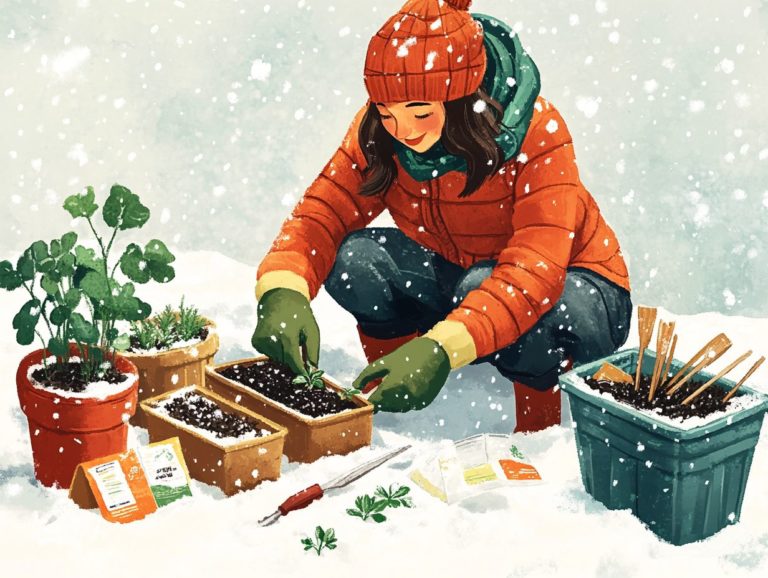How Cold Affects Plant Growth in Winter
Winter is here! You ll notice the landscape undergoes a stunning transformation, and plants are no exception.
Understanding how cold affects plant growth is essential for every gardener. This article explores how temperature influences plant health and shares effective strategies to protect your greens from harsh conditions.
You ll discover resilient plant species that thrive in winter and get valuable tips for nurturing your garden. Dive in to unveil the secrets of winter plant growth!
Contents
- Key Takeaways:
- Understanding Plant Growth in Winter
- Effects of Cold on Plants
- Strategies for Protecting Plants from Cold
- Adapting to Cold Climates
- Frequently Asked Questions
- What is the ideal temperature range for plant growth in winter?
- How does cold temperature affect plant growth in winter?
- Do plants need sunlight in winter?
- Can plants survive freezing temperatures in winter?
- How does cold temperature affect the soil in winter?
- What are some ways to protect plants from cold temperatures in winter?
Key Takeaways:
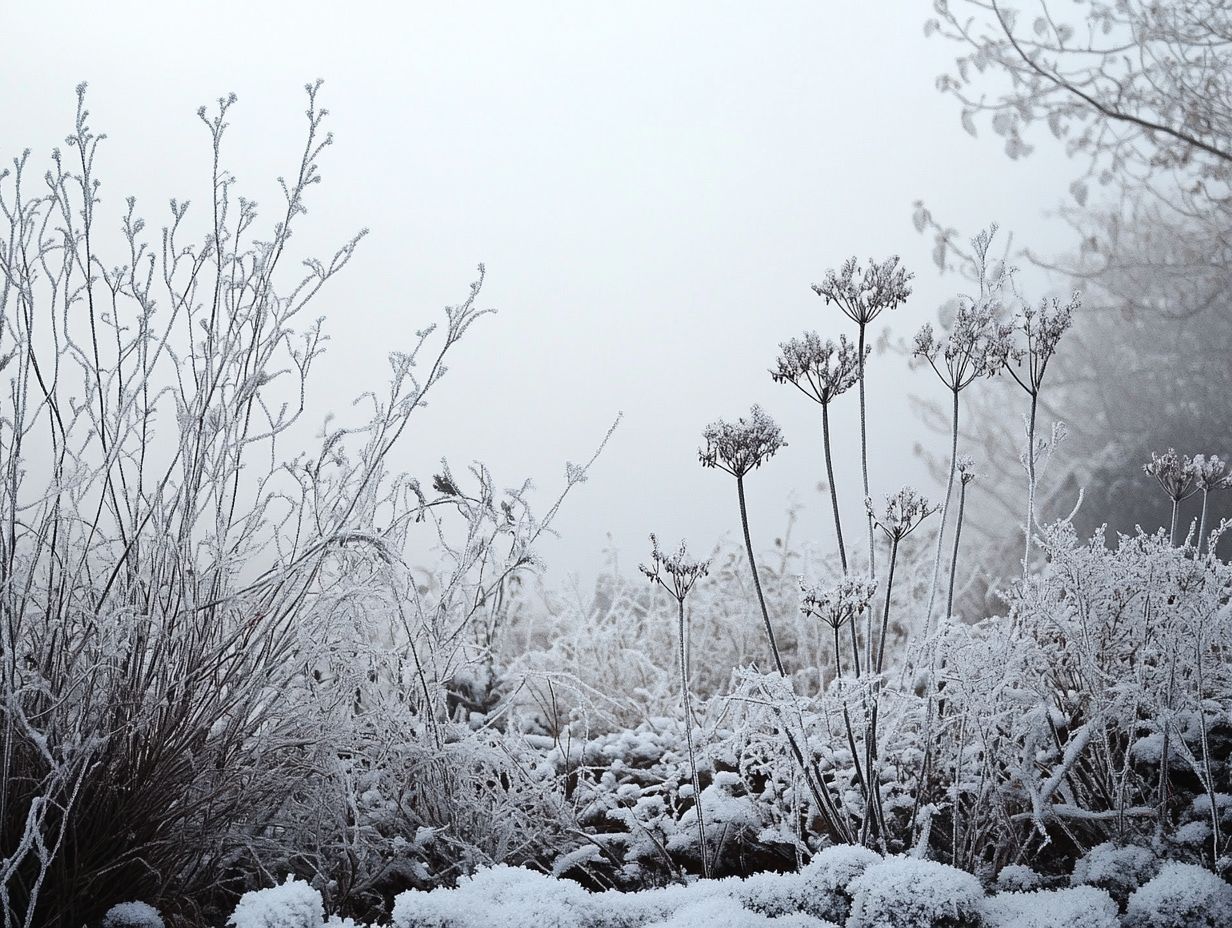
- Winter temperatures are crucial for plant growth, affecting photosynthesis and metabolic processes.
- Cold weather can cause wilting and stunted growth, impacting productivity and plant health.
- Protect plants by insulating them, choosing cold-hardy varieties, and adjusting planting schedules.
Understanding Plant Growth in Winter
Understanding plant growth in winter is vital for creating a thriving garden, especially in cold areas. To ensure your plants are healthy, it’s important to know the signs of plant stress in cold weather, as winter weather greatly influences cold-weather plants and their development.
USDA guidelines help in understanding plant hardiness. It s crucial to know how temperature fluctuations affect different species, including native and ornamental plants.
Microclimates small areas with different temperatures play a key role in plant survival during colder months.
The Role of Temperature in Plant Growth
Temperature greatly impacts your plants, from seed germination to flowering. Cold weather can create challenges for plants sensitive to low temperatures.
Sudden temperature changes can stress your plants, especially when nighttime lows dip unexpectedly. This may lead to frost damage and disrupt essential processes, including photosynthesis.
Following USDA hardiness zone guidelines helps you choose varieties suited to your climate, reducing the risk of temperature-related issues.
For instance, sudden late fall temperature drops may cause freeze injury. On the other hand, a warm spell in winter might trick plants into budding too early, making them vulnerable to late frosts.
Effects of Cold on Plants
The impact of cold on plants can be striking. You might observe frost heaves disturbing root systems or cold injury affecting fragile tissues and flower buds.
Physical Changes in Plants
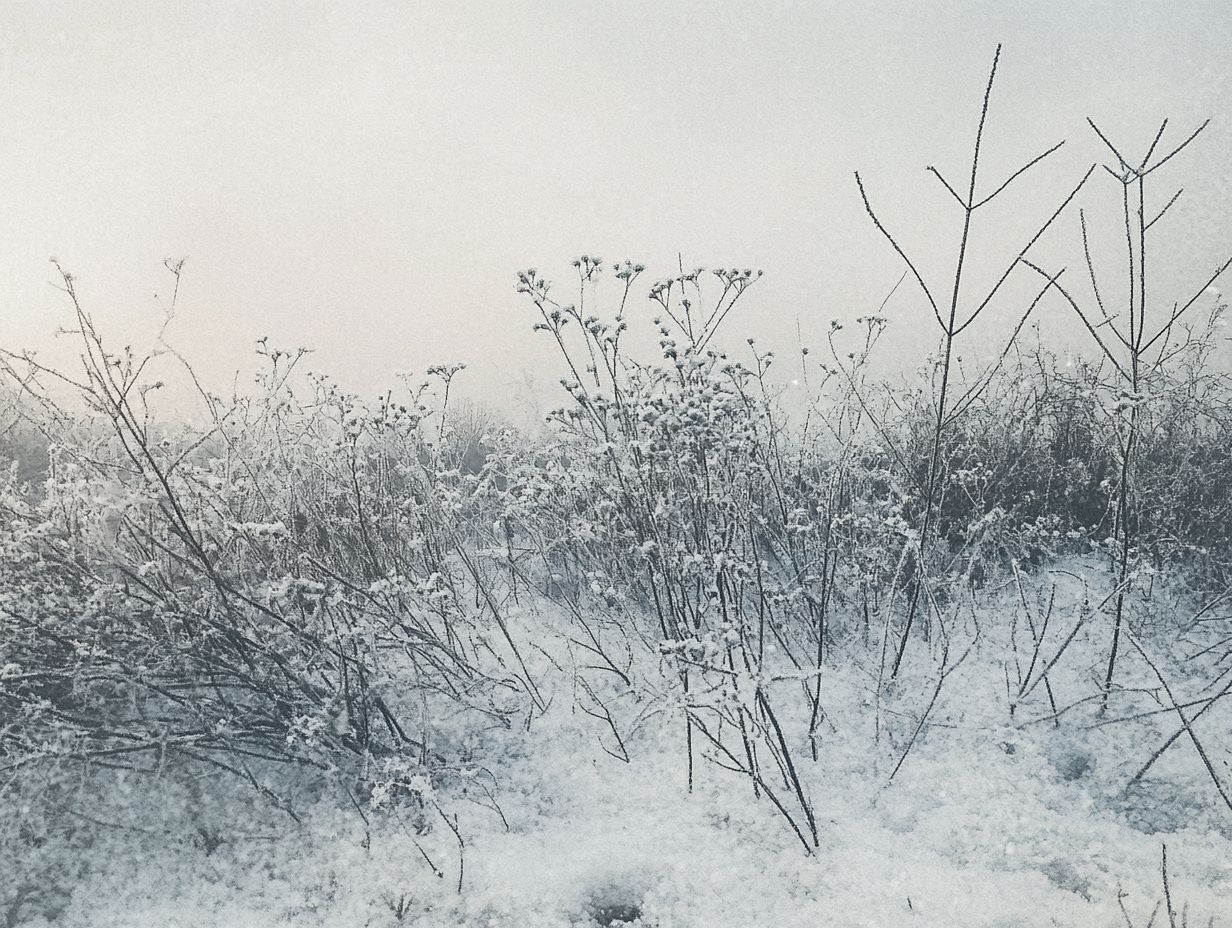
Cold injury can trigger physical changes in your plants, such as wilting and dieback of shoots. These signs are critical indicators of stress that can impact overall growth.
You might notice reduced flower bud hardiness and changes in water transport tissues. When temperatures drop, many plants harden to withstand the cold.
Take strong specimens like Japanese honeysuckle and winterberry; they develop thicker bark and modified leaf structures to conserve moisture and resist freezing.
These resilient plants adapt to handle ice formation, ensuring effective water transport and enhancing their chances of survival. This adaptability enriches the biodiversity of their ecosystems.
Impact on Growth and Development
The impact of cold on your plants’ growth can be profound. To mitigate this, it’s important to understand how to protect your plants in cold weather, as it often hampers nutrient flow and challenges root survival during chilling periods.
As temperatures drop, your plants enter a phase where their plant functions slow significantly. This results in reduced photosynthesis and stunted growth. The chilling effect doesn t just affect the visible structures of your plants; it also poses a serious threat to the root systems that are essential for water and nutrient uptake.
When frost sets in, it can cause cellular damage, throwing off the balance your plants need to thrive! Maintaining a robust root environment becomes increasingly crucial. Healthy roots equip plants to withstand adverse conditions and enhance overall plant resilience against the harsher aspects of winter.
Strategies for Protecting Plants from Cold
Implementing effective strategies to protect your plants from the cold can significantly enhance their resilience. Techniques like applying mulch, utilizing frost barriers, and ensuring adequate winter sun exposure are essential gardening tips that can lead to your success.
Methods for Insulating and Shielding Plants
Effective methods for insulating and shielding your plants from the cold encompass a range of techniques designed to create protective barriers against frost and extreme temperatures, especially for those vulnerable container plants.
These strategies not only enhance the overall health of your plants but also play a vital role in ensuring that tender species can flourish even through the harshest winters. Using materials like burlap or frost blankets adds an extra layer of insulation, effectively trapping warmth and keeping your plants cozy.
Implementing frost barriers, such as clear plastic covers or cloches, helps protect against sudden temperature drops while still allowing sunlight to reach the foliage. By embracing these thoughtful practices, you can create a more stable environment that encourages healthy growth, even during the chillier months.
Adapting to Cold Climates
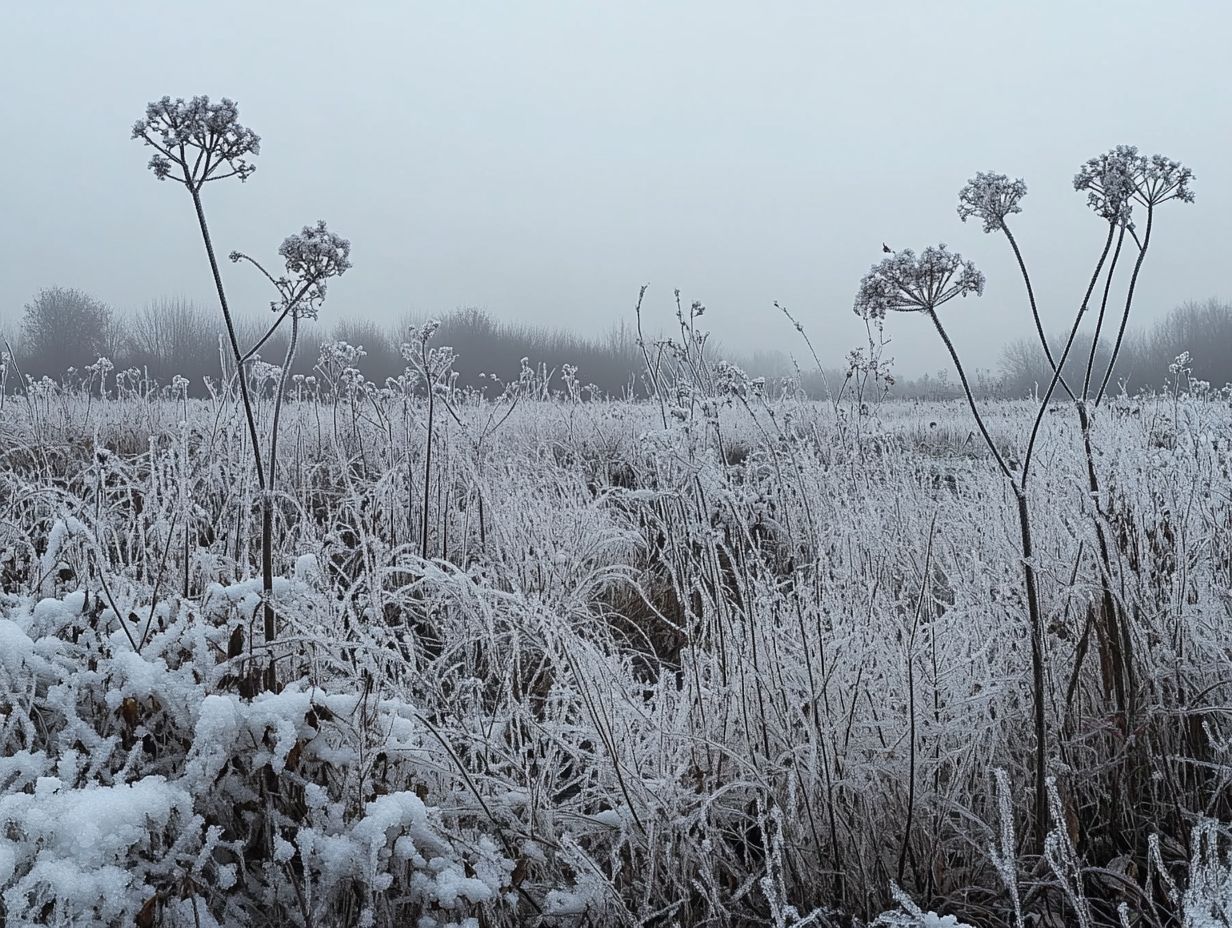
Adapting to cold climates is crucial for you as a gardener. By choosing the right plants that flourish in winter, such as hardy and native varieties, you can greatly enhance the sustainability of your garden, even in the harshest conditions.
Types of Plants that Thrive in Winter
Hardy and native plants are your best allies when it comes to thriving in winter. They showcase an impressive resilience against the chill that often sidelines less robust species.
These remarkable plants don t just survive the frigid temperatures; they often flourish in conditions that would typically challenge other varieties. They add a unique charm to any cold climate garden, boasting vibrant hues and textures that beautifully contrast with a frost-kissed backdrop.
Take evergreens, for example they maintain their lush foliage throughout winter, providing a touch of structure and greenery. Meanwhile, perennial stars like sedum and hellebores delight with captivating blooms, even in the depths of the season.
By incorporating native plants, you enhance biodiversity, support local wildlife, and promote a healthier ecosystem. This makes them an invaluable choice for anyone passionate about winter gardening.
Tips for Successful Winter Gardening
Successful winter gardening demands a strategic approach, incorporating essential tips that tackle the unique challenges of cold pockets and the necessity for adequate winter sun exposure for your plants.
- Consider using row covers or cold frames to shield delicate specimens from frost.
- Ensure moisture levels remain consistent to combat dehydration caused by harsh winds.
- Select hardy plant varieties that thrive in winter conditions to significantly enhance robust growth.
- Don’t underestimate the power of mulching; it regulates soil temperature and conserves moisture.
- Regularly check for pests, as some can still thrive in winter, jeopardizing the health of your established plants.
Act now with these proactive measures to ensure your winter garden flourishes!
Frequently Asked Questions
What is the ideal temperature range for plant growth in winter?
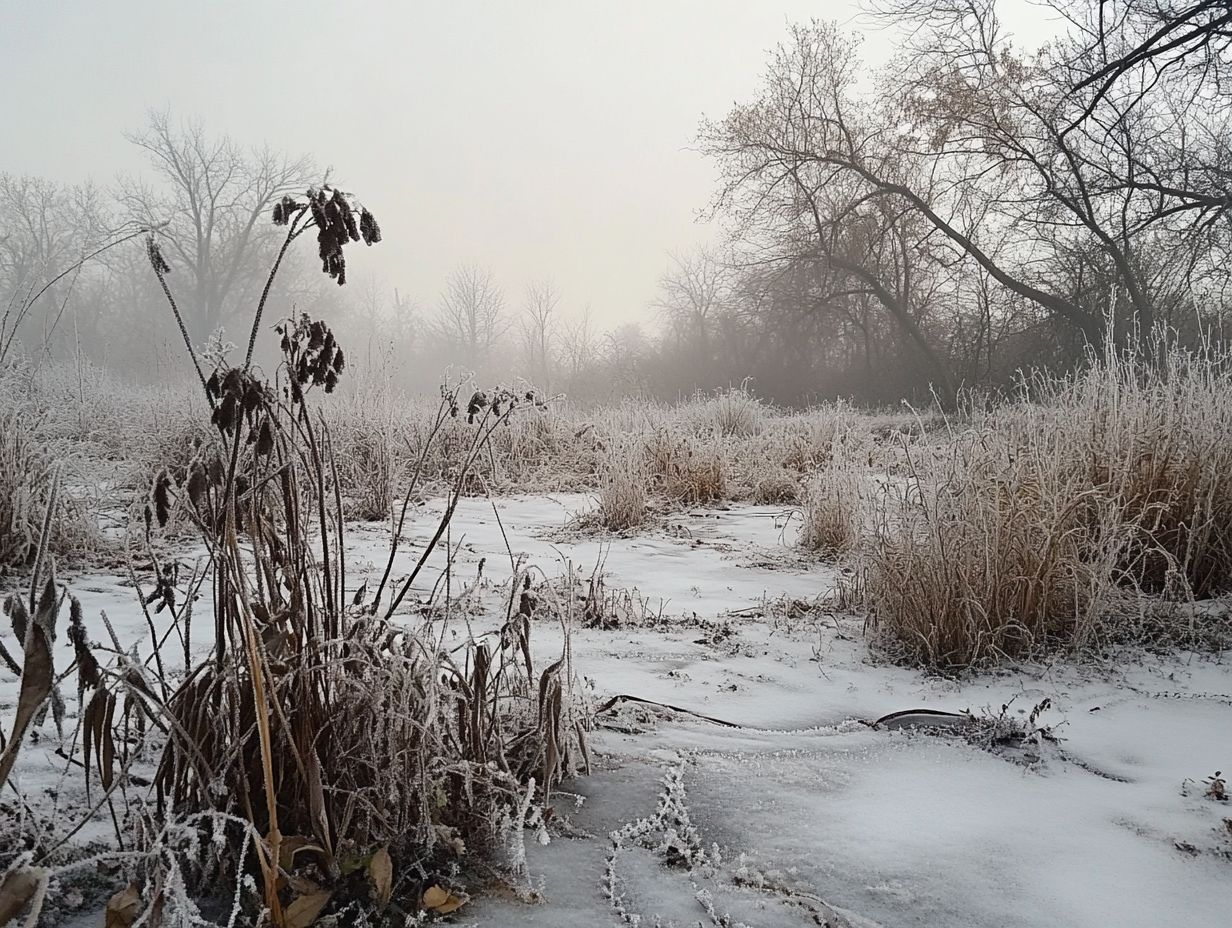
The ideal temperature range for plant growth in winter varies by plant type. Most plants thrive in temperatures between 40-60 degrees Fahrenheit, but some can tolerate as low as 20 degrees Fahrenheit.
How does cold temperature affect plant growth in winter?
Cold temperatures can slow or even stop plant growth in winter. This happens because the cold makes it hard for plants to absorb nutrients and can damage their cells. To better understand these challenges, explore the growth habits of cold plants.
Do plants need sunlight in winter?
Yes, plants still need sunlight in winter for photosynthesis. However, the amount of sunlight they receive may be reduced due to shorter days and fewer hours of sunlight. This can also affect their growth in winter.
Can plants survive freezing temperatures in winter?
Some plants can survive freezing temperatures, while others cannot. It depends on the plant’s ability to withstand extreme cold. Proper care and protection can also help plants survive freezing temperatures.
How does cold temperature affect the soil in winter?
Cold temperatures can cause the soil to freeze, making it tough for roots to absorb nutrients and water. This may result in stunted growth or death for sensitive plants.
What are some ways to protect plants from cold temperatures in winter?
Protect your plants from the cold by using mulch or covering them with fabric or plastic. Frost barriers are also great for shielding against chilly snaps.

